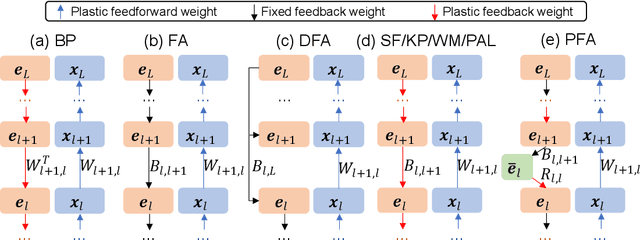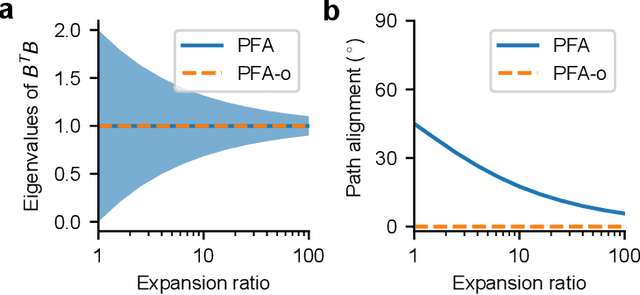Marcus K. Benna
Language Models Are Capable of Metacognitive Monitoring and Control of Their Internal Activations
May 19, 2025Abstract:Large language models (LLMs) can sometimes report the strategies they actually use to solve tasks, but they can also fail to do so. This suggests some degree of metacognition -- the capacity to monitor one's own cognitive processes for subsequent reporting and self-control. Metacognitive abilities enhance AI capabilities but raise safety concerns, as models might obscure their internal processes to evade neural-activation-based oversight mechanisms designed to detect harmful behaviors. Given society's increased reliance on these models, it is critical that we understand the limits of their metacognitive abilities, particularly their ability to monitor their internal activations. To address this, we introduce a neuroscience-inspired neurofeedback paradigm designed to quantify the ability of LLMs to explicitly report and control their activation patterns. By presenting models with sentence-label pairs where labels correspond to sentence-elicited internal activations along specific directions in the neural representation space, we demonstrate that LLMs can learn to report and control these activations. The performance varies with several factors: the number of example pairs provided, the semantic interpretability of the target neural direction, and the variance explained by that direction. These results reveal a "metacognitive space" with dimensionality much lower than the model's neural space, suggesting LLMs can monitor only a subset of their neural mechanisms. Our findings provide empirical evidence quantifying metacognitive capabilities in LLMs, with significant implications for AI safety.
Deep Learning without Weight Symmetry
May 31, 2024



Abstract:Backpropagation (BP), a foundational algorithm for training artificial neural networks, predominates in contemporary deep learning. Although highly successful, it is often considered biologically implausible. A significant limitation arises from the need for precise symmetry between connections in the backward and forward pathways to backpropagate gradient signals accurately, which is not observed in biological brains. Researchers have proposed several algorithms to alleviate this symmetry constraint, such as feedback alignment and direct feedback alignment. However, their divergence from backpropagation dynamics presents challenges, particularly in deeper networks and convolutional layers. Here we introduce the Product Feedback Alignment (PFA) algorithm. Our findings demonstrate that PFA closely approximates BP and achieves comparable performance in deep convolutional networks while avoiding explicit weight symmetry. Our results offer a novel solution to the longstanding weight symmetry problem, leading to more biologically plausible learning in deep convolutional networks compared to earlier methods.
Linking In-context Learning in Transformers to Human Episodic Memory
May 23, 2024Abstract:Understanding the connections between artificial and biological intelligent systems can reveal fundamental principles underlying general intelligence. While many artificial intelligence (AI) models have a neuroscience counterpart, such connections are largely missing in Transformer models and the self-attention mechanism. Here, we examine the relationship between attention heads and human episodic memory. We focus on the induction heads, which contribute to the in-context learning capabilities of Transformer-based large language models (LLMs). We demonstrate that induction heads are behaviorally, functionally, and mechanistically similar to the contextual maintenance and retrieval (CMR) model of human episodic memory. Our analyses of LLMs pre-trained on extensive text data show that CMR-like heads often emerge in the intermediate model layers and that their behavior qualitatively mirrors the memory biases seen in humans. Our findings uncover a parallel between the computational mechanisms of LLMs and human memory, offering valuable insights into both research fields.
Emulating Complex Synapses Using Interlinked Proton Conductors
Jan 26, 2024Abstract:In terms of energy efficiency and computational speed, neuromorphic electronics based on non-volatile memory devices is expected to be one of most promising hardware candidates for future artificial intelligence (AI). However, catastrophic forgetting, networks rapidly overwriting previously learned weights when learning new tasks, remains as a pivotal hurdle in either digital or analog AI chips for unleashing the true power of brain-like computing. To address catastrophic forgetting in the context of online memory storage, a complex synapse model (the Benna-Fusi model) has been proposed recently[1], whose synaptic weight and internal variables evolve following a diffusion dynamics. In this work, by designing a proton transistor with a series of charge-diffusion-controlled storage components, we have experimentally realized the Benna-Fusi artificial complex synapse. The memory consolidation from coupled storage components is revealed by both numerical simulations and experimental observations. Different memory timescales for the complex synapse are engineered by the diffusion length of charge carriers, the capacity and number of coupled storage components. The advantage of the demonstrated complex synapse in both memory capacity and memory consolidation is revealed by neural network simulations of face familiarity detection. Our experimental realization of the complex synapse suggests a promising approach to enhance memory capacity and to enable continual learning.
 Add to Chrome
Add to Chrome Add to Firefox
Add to Firefox Add to Edge
Add to Edge